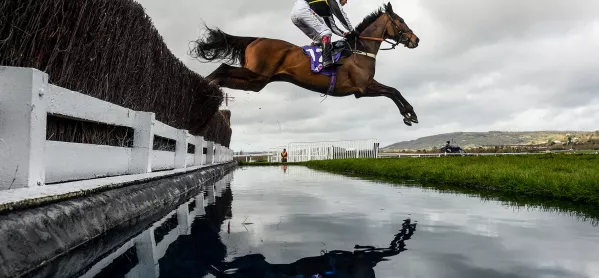- Home
- Primary: 4 tips for teachers jumping between years
Primary: 4 tips for teachers jumping between years

Over my career so far, I have been lucky enough to teach in every primary year group, sometimes being moved part way through the year due to staffing issues.
As a senior member of staff, I have taken this on the chin - but that hasn’t made it any easier.
A few years ago, I was asked to move from Year 2 to Year 6 just after February half-term.
Quick read: How to talk about the news with primary pupils
Quick listen: Why attachment-aware teaching matters for every child
Want to know more? Zest is best in schools - even if it grates on our nerves
My Year 2s and I were settled into a lovely routine, we had gone through the departure of two very popular members of the class, one of our number suffering a bereavement, and a temporary classroom move due to major electrical work in school.
We had got to know each other really well and were ready to press on towards the Sats.
Luckily, breaking the news to them that I was leaving them for, as they put it, “the big kids in Year 6” was softened a little by reassuring them that they were to be taught the rest of the year by a lovely member of staff who they knew well and loved.
I, however, took a little more time to adjust. I loved Year 6 and had always referred to it as my spiritual home, having spent six years there, but this was a BIG change.
I knew the class was a challenging one, the staffing change arising from unexpected circumstances only adding to the tense atmosphere, and I was concerned about how to bond quickly with them while tackling the subject knowledge and change in teaching style.
This year, I’m back in Year 1 after 10 years. It got me thinking about the most useful things to know when making these sorts of leaps. Here are my top tips:
Advice for teachers moving years in primary school
Know your subjects
Teaching children how to add numbers is easy, right? But it requires very different skills in Year 6 than in Year 1.
Take the time to revise, and make sure you know your school’s calculation policy (though be prepared for some children preferring to do it in a different way) and don’t be too hard on yourself - as the year goes on and you move through the units, you may find the need to gen up.
Even the most experienced teachers should do this. There are always new methods to be discovered, and reading up to be done, before you teach a new objective. It keeps your pedagogy fresh.
Ask for help from the right people
It is easy in this profession to be insular. To stay in our classrooms and pretend everything is OK, and “manage” on our own. But step out of that comfort zone and seek out the person in your organisation who can help you.
I went straight to a trusted early years colleague to prepare for my move to Year 1 - she talked me through current thinking in continuous provision, and gave me invaluable advice, such as how long tiny children can be expected to concentrate on certain tasks.
She was full of great ideas and I learned a lot, helping me to feel much more prepared. Don’t be afraid to ask - after all, there may one day be something that you can help that colleague with in return.
Train yourself happy
Ask your SLT for support. Is there some training that you need now that you are in your new year group? Many local authorities run courses for teachers who are new to an age group.
If money is an issue, why not ask if you can visit another school locally to share good practice? This worked for me.
I got to have a nosy at how someone else had set their environment up and also felt reassured that our classrooms weren’t that dissimilar - I knew the school I was visiting was judged to be an excellent provider of early years and Key Stage 1 learning, so was keen to see what was going on there.
Environment, environment, environment
I am a self-confessed prop junkie. I am lethal on trips to Ikea, I can’t go near a pound store without acquiring random items that look like junk to others but to me will enhance my guided reading sessions (giant sunglasses, anyone?) and am never without camouflage netting or fairy lights.
I want to work every day in a classroom where children feel energised and enthusiastic to learn and where I feel inspired to teach. It sounds corny, but it’s true.
If you are teaching Year 1, everything will need labelling. In Year 4, think large-scale 3D topic displays to really immerse children in what they are going to produce.
Our Year 5s and 6s love to have a display space for their artwork, and it’s nice to give this a real gallery feel with raised platforms (fabric-covered photocopy paper box lids) and a bit of mood lighting (fairy lights).
Lucy Moss is a key stage 2 leader in an inner-city primary school
Keep reading for just £1 per month
You've reached your limit of free articles this month. Subscribe for £1 per month for three months and get:
- Unlimited access to all Tes magazine content
- Exclusive subscriber-only stories
- Award-winning email newsletters



